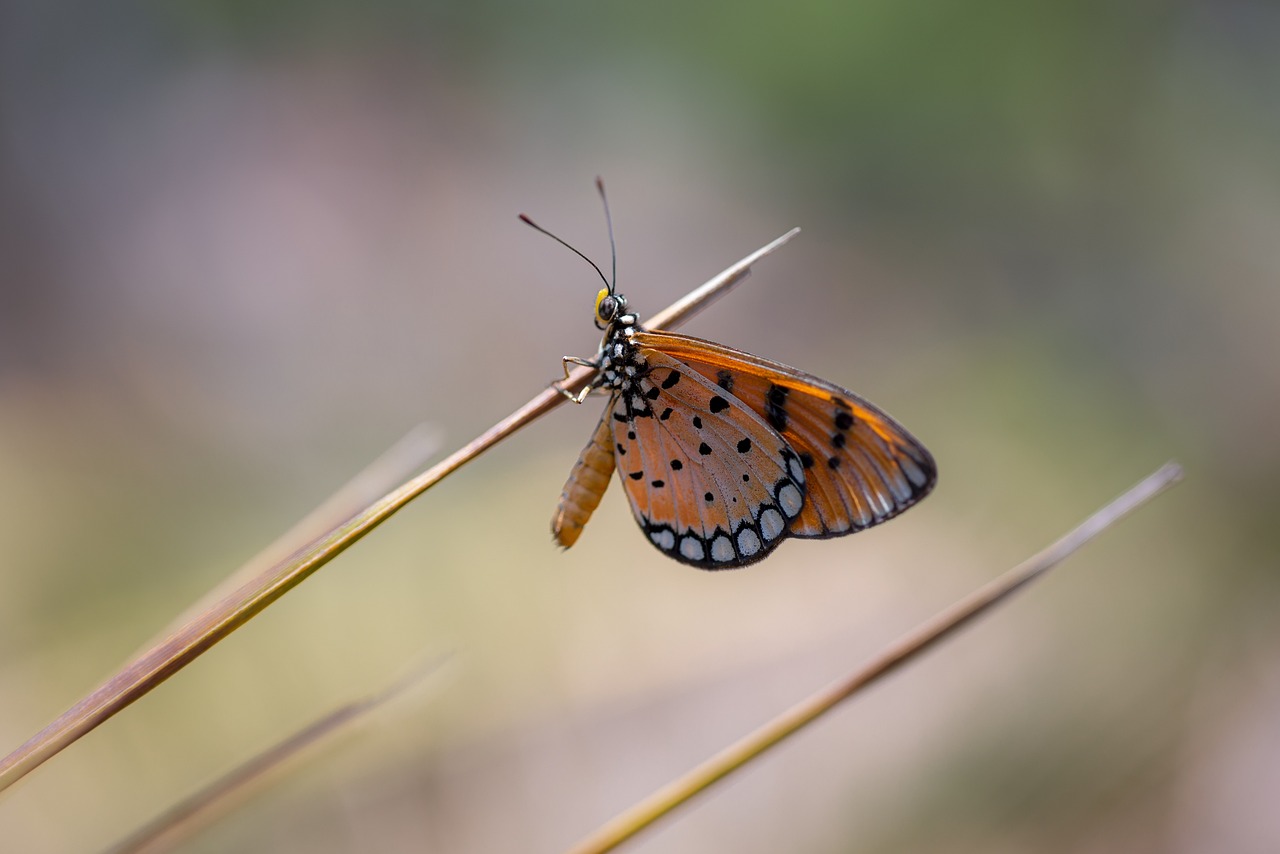The Tawny Coster (Acraea violae) is a small to medium-sized butterfly known for its distinctive orange and black coloration. This butterfly is part of the Nymphalidae family and is widely distributed across South Asia and Southeast Asia. It is easily recognized by its vibrant colors and delicate appearance.
Appearance
- Wingspan: Typically ranges from 50 to 60 millimeters.
- Coloration:
- Upperside: Bright orange with black spots scattered across both forewings and hindwings. The black borders of the wings are filled with white spots, giving it a lace-like appearance.
- Underside: Paler, with a more subdued orange hue and black and white markings.
- Sexual Dimorphism: Males and females look similar, but females tend to have a slightly larger wingspan and more extensive black markings.
Habitat
- Distribution: Found throughout South Asia, including India, Sri Lanka, Nepal, and Bangladesh, extending to Southeast Asia, including Thailand, Malaysia, and Indonesia. It is also expanding its range into parts of Australia.
- Preferred Habitats: Open areas such as grasslands, gardens, scrublands, and agricultural fields. They are commonly seen at the edges of forests and along roadsides.
Behavior
- Feeding: The Tawny Coster primarily feeds on nectar from various flowering plants such as Lantana, Ageratum, and Tridax. The caterpillars feed on a variety of host plants, mainly from the passionflower family (Passifloraceae).
- Flight Pattern: Characterized by a slow, fluttering flight, usually close to the ground. They are known to be weak fliers, often preferring to bask in the sun with their wings open.
- Defensive Strategy: The bright orange coloration serves as a warning to predators, indicating that the butterfly is unpalatable due to toxins acquired from its host plants.
Life Cycle
- Egg: Females lay eggs in clusters on the underside of host plant leaves.
- Larva (Caterpillar): The caterpillars are dark, almost black, with white spots and multiple rows of long, fleshy spines. They feed on leaves of host plants, accumulating toxic compounds that make them distasteful to predators.
- Pupa (Chrysalis): The chrysalis is mottled brown and green, often hanging from the underside of leaves or twigs.
- Adult: Emerges after a couple of weeks, ready to feed and reproduce.
Ecological Importance
- Pollination: As nectar feeders, Tawny Costers contribute to the pollination of various flowering plants.
- Prey and Predator Dynamics: They are involved in the food web as prey for specialized predators that can tolerate their toxins. Their presence also indicates the health of the local habitat, particularly the availability of their host plants.
Conservation Status
- Common and Expanding: The Tawny Coster is not considered at risk and is common throughout much of its range. It has shown an ability to adapt to disturbed habitats and is expanding its range, particularly in areas where its host plants are abundant.
The Tawny Coster (Acraea violae) is a fascinating butterfly with its vivid colors and unique adaptations for survival. Its expanding range and ability to thrive in diverse habitats make it a resilient species and an important part of its ecosystems.
Visited 217 times, 29 visit(s) today
Views: 353
Subscribe to the newsletter:
